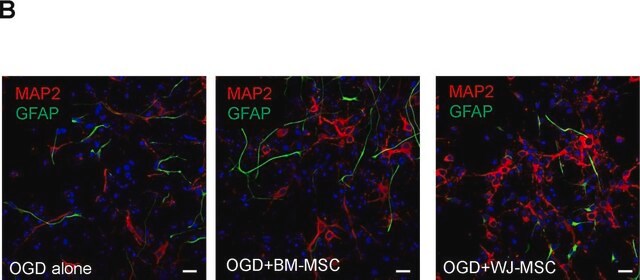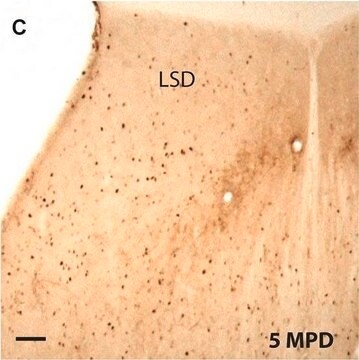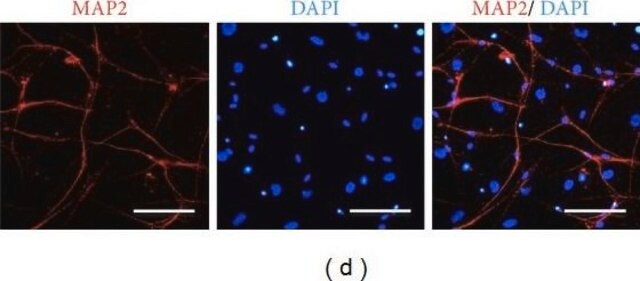AB5622
Anti-Microtubule-Associated Protein 2 (MAP2) Antibody
Chemicon®, from rabbit
Synonym(s):
Anti-MAP2 antibody, microtubule-associated protein 2
About This Item
Recommended Products
biological source
rabbit
Quality Level
antibody form
saturated ammonium sulfate (SAS) precipitated
antibody product type
primary antibodies
clone
polyclonal
species reactivity
rat, mouse, human
manufacturer/tradename
Chemicon®
technique(s)
ELISA: suitable
immunocytochemistry: suitable
immunohistochemistry (formalin-fixed, paraffin-embedded sections): suitable
western blot: suitable
NCBI accession no.
UniProt accession no.
target post-translational modification
unmodified
Gene Information
human ... MAP2(4133)
mouse ... Map2(17756)
rat ... Map2(25595)
General description
Specificity
Immunogen
Application
1:1,000 dilution of a previous lot was used on primary neurons.
Immunohistochemistry:
1:1,000 dilution on 4% paraformaldehyde / PBS fixed tissue sections.
Immunoblot:
1:2,000 dilution was used on a previous lot. Recognizes MAP2A (280-300kDa, and MAP2B (270-280KDa), and to a lesser extent MAP2C (70kDa) and MAP2D (70-75kDa).
ELISA:
greater than or equal to1:2,000 dilution of a previous lot was used.
Optimal working dilutions must be determined by the end user.
Neuroscience
Neuronal & Glial Markers
Neurofilament & Neuron Metabolism
Quality
MAP2 (cat. # AB5622) staining on Normal Cerebellum. Tissue pretreated with Citrate, pH 6.0. This lot of antibody was diluted to 1:500, using IHC-Select Detection with HRP-DAB. Immunoreactivity is seen as fiber-like- staining (brown) on microtubule.
Optimal Staining With TE Buffer, pH 9.0, Epitope Retrieval: Human Cerebellum
Target description
Physical form
Storage and Stability
Analysis Note
Human brain tissue or human glioblastoma T98G cells
Legal Information
Disclaimer
Not finding the right product?
Try our Product Selector Tool.
recommended
Storage Class Code
12 - Non Combustible Liquids
WGK
nwg
Flash Point(F)
Not applicable
Flash Point(C)
Not applicable
Certificates of Analysis (COA)
Search for Certificates of Analysis (COA) by entering the products Lot/Batch Number. Lot and Batch Numbers can be found on a product’s label following the words ‘Lot’ or ‘Batch’.
Already Own This Product?
Find documentation for the products that you have recently purchased in the Document Library.
Customers Also Viewed
Our team of scientists has experience in all areas of research including Life Science, Material Science, Chemical Synthesis, Chromatography, Analytical and many others.
Contact Technical Service











